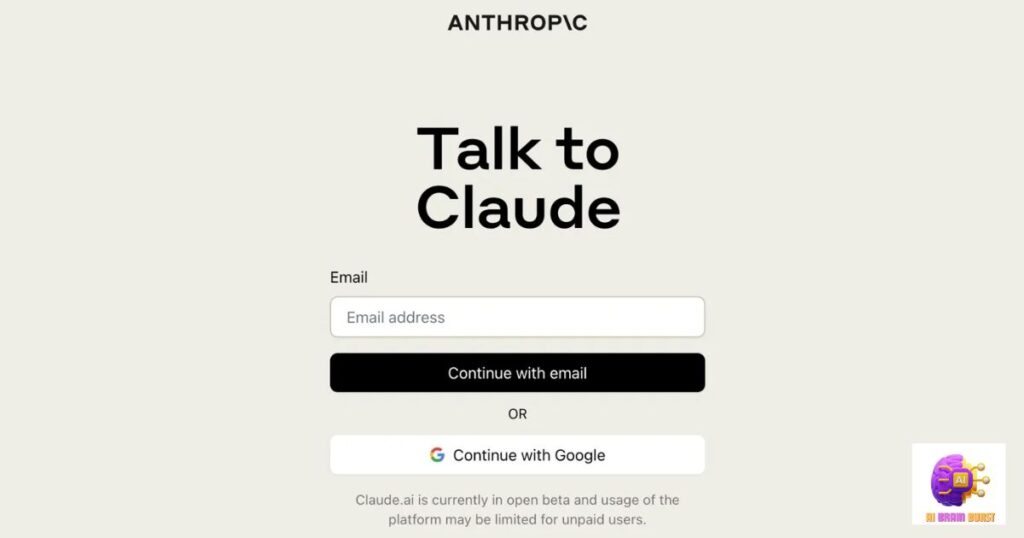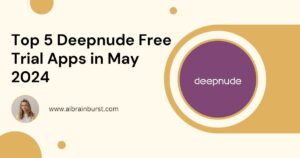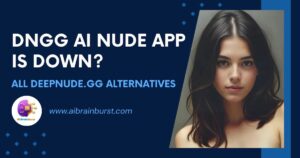How to Use New Claude 2? is an informative guide exploring the functionalities and benefits of Anthropic’s latest AI assistant.
Covering topics from getting started with Claude 2 to advanced techniques and ethical use, it equips users with the knowledge to maximize their interactions and productivity with this cutting-edge technology.
Whether you’re a beginner or an experienced user, this article provides valuable insights into leveraging Claude 2’s capabilities effectively.
Discover the power of AI with Claude 2 the ultimate assistant for your digital journey in 2024.
Learn how to leverage its cutting-edge features and unlock limitless possibilities. Dive into How to Use New Claude 2? today and revolutionize your AI experience!
Understanding New Claude 2
Understanding New Claude 2 requires delving into its core advancements in artificial intelligence.
Unlike its predecessor, Claude 2 boasts a significantly enhanced natural language processing (NLP) engine, enabling it to comprehend and respond to human communication with exceptional precision and context awareness.
This improved NLP capability allows AI Death Calculator to interpret nuanced queries, understand complex contexts, and provide more relevant and accurate responses.
Furthermore, one of the key features that sets Claude 2 apart is its advanced reasoning abilities.
Leveraging cutting-edge machine learning algorithms, Claude 2 can engage in complex problem-solving tasks, drawing inferences from vast repositories of data and offering insightful solutions tailored to specific user needs.
This makes Claude 2 not just a passive responder but an active participant in intellectual exchanges, capable of contributing meaningfully to diverse conversations.
Additionally, Claude 2 excels in multitasking, enabling users to engage in multiple conversations simultaneously without compromising performance.
Its enhanced memory retention ensures continuity and coherence across various topics, facilitating seamless and productive interactions.
This means users can rely on Claude 2 for continuous support and engagement across a wide range of tasks and discussions.
In essence, understanding New Claude 2 entails recognizing its advancements in NLP, reasoning capabilities, multitasking prowess, and memory retention, all of which combine to create a highly capable and versatile AI assistant that revolutionizes the way humans interact with AI technology.
Getting Started with Claude 2
Getting started with Claude 2 is a straightforward process designed to ensure a seamless user experience.
To begin, users need to create an account with Anthropic, the developer behind Claude 2’s innovative technology.
This account creation step grants access to the user-friendly interface that serves as the gateway to Claude 2’s capabilities.
Once logged in, users can initiate conversations by typing queries or prompts into the designated input field, leveraging Claude 2’s advanced natural language processing (NLP) engine.
The intuitive interface of Claude 2 caters to users of all technical backgrounds, whether they are seasoned programmers or casual users seeking AI assistance.
Upon inputting a query, Claude 2’s NLP engine analyzes the text, parses its meaning, and formulates a contextually relevant response.
This streamlined interaction process allows users to engage in natural conversations with Claude 2, ask follow-up questions, or provide additional context to refine the AI’s understanding of their needs.
Furthermore, Claude 2’s user interface includes features such as autocomplete and suggestion prompts, which aid users in formulating queries and navigating the AI assistant’s capabilities more efficiently.
These features contribute to a user-friendly experience, empowering individuals to harness Claude 2’s functionalities effectively.
Overall, getting started with Claude 2 is designed to be accessible, intuitive, and tailored to the diverse needs of users across various domains and skill levels.
Exploring Claude 2’s Capabilities

Exploring Claude 2’s capabilities unveils a world of possibilities across diverse domains.
In writing and analysis, Claude 2 serves as a collaborative partner, assisting users in creative writing, proofreading, editing, research, and analysis tasks.
Its language proficiency and ability to synthesize information make it a valuable tool for content creation and refinement.
In coding and programming, Claude 2 offers code generation, debugging, optimization, and technical documentation support, streamlining software development processes and enhancing code quality.
In mathematics and calculations, Claude 2 showcases its mathematical prowess by solving complex equations, performing data analysis, and verifying mathematical proofs.
Its ability to handle intricate calculations and statistical analysis aids users in various mathematical endeavors.
Additionally, in image interpretation and transcription, Claude 2 provides image analysis, optical character recognition (OCR), and image captioning services.
These capabilities enable users to extract valuable insights from visual data, convert text within images into editable formats, and generate accurate image descriptions.
- Writing and Analysis:
- Creative writing assistance
- Proofreading and editing support
- Research and analysis collaboration
- Language proficiency for content refinement
- Coding and Programming:
- Code generation in multiple languages
- Debugging and optimization assistance
- Technical documentation collaboration
- Streamlining software development processes
- Mathematics and Calculations:
- Equation solving and data analysis
- Mathematical proof verification
- Statistical analysis support
- Handling complex calculations efficiently
- Image Interpretation and Transcription:
- Detailed image analysis and object identification
- Optical character recognition (OCR) capabilities
- Accurate image captioning
- Converting text within images into editable formats
Advanced Techniques and Tips
Advanced techniques and tips enhance the user experience and productivity when interacting with Claude 2.
Contextual prompting involves providing as much context as possible to Claude 2 to enhance its understanding of user needs.
Iterative refinement encourages engaging in dialogues with Claude 2, providing feedback to improve responses over time.
Customization and personalization options allow users to tailor Claude 2’s behavior, preferences, and learning patterns to suit their specific needs and preferences.
Ethical and responsible use guidelines emphasize the importance of using Claude 2 in an ethical and responsible manner, respecting intellectual property rights and promoting transparent communication about its usage.
- Contextual Prompting:
- Providing detailed context for better understanding
- Using descriptive prompts to convey objectives clearly
- Breaking down complex tasks into smaller prompts
- Guiding Claude 2 through problem-solving processes effectively
- Iterative Refinement:
- Engaging in ongoing dialogues for feedback
- Polite requests for clarification or improvements
- Continuously refining prompts and responses
- Achieving desired results through iterative interactions
- Customization and Personalization:
- Adjusting language preferences and output formats
- Tailoring Claude 2’s behavior to specific needs
- Leveraging learning capabilities for personalized experiences
- Adapting to user preferences and habits over time
- Ethical and Responsible Use:
- Familiarizing with guidelines for ethical AI use
- Respecting intellectual property and privacy rights
- Avoiding misuse for unethical or harmful purposes
- Promoting transparency and accountability in AI interactions
Collaboration and sharing opportunities involve leveraging Claude 2’s context retention across conversations for seamless collaboration.
Users can share experiences, insights, and best practices with the Claude 2 community, contributing to its development and collective knowledge.
By embracing these advanced techniques and tips, users can maximize Claude 2’s potential, streamline workflows, and ensure responsible and beneficial AI interactions.
How to use new claude 2 for free
Utilizing New Claude 2 for free opens up a world of possibilities without financial constraints. Users can access Claude 2’s capabilities by creating a free account with Anthropic, theeloper bassistant.
The process involves registering on the platform and gaining immediate access to the intuitive interface and powerful functionalities of Claude 2 at no cost.
- Free Account Creation:
- Registering with Anthropic to access Claude 2’s features.
- No subscription fees or upfront costs for basic usage.
- Instant access to the user-friendly interface and AI capabilities.
- Basic Functionality:
- Leveraging Claude 2’s advanced NLP engine for natural conversations.
- Accessing basic features such as writing assistance, coding support, and mathematical calculations.
- Engaging in productive interactions without financial obligations.
Claude 2 Free Access

Claude 2 offers free access to its basic features, providing users with a glimpse into its capabilities without any financial commitment.
This free access allows users to experience Claude 2’s advanced natural language processing (NLP) engine, which enables seamless and contextually relevant interactions.
Users can leverage Claude 2 for tasks such as writing assistance, coding support, and basic mathematical calculations, making it a valuable resource for various endeavors.
- Free Basic Features:
- Accessing Claude 2’s NLP engine for natural interactions.
- Utilizing writing assistance and coding support without fees.
- Performing basic mathematical calculations and analyses at no cost.
Claude 2 Api
The Claude 2 API provides developers with a powerful toolset to integrate Claude 2’s advanced AI capabilities into their applications and workflows seamlessly.
This API allows developers to access Claude 2’s natural language processing (NLP) engine, reasoning abilities, and multitasking features programmatically, opening up a wide range of possibilities for AI-driven solutions.
With the Claude 2 API, developers can enhance user experiences, automate tasks, and leverage Claude 2’s intelligence to create innovative applications across various domains.
Here is a sample table showcasing some of the key functionalities and endpoints available through the Claude 2 API:
| Functionality | Endpoint | Description |
|---|---|---|
| Natural Language Processing | /api/nlp | Analyzes and processes natural language input to generate responses. |
| Reasoning Abilities | /api/reasoning | Engages in complex problem-solving tasks and provides insightful solutions. |
| Multitasking Support | /api/multitasking | Enables simultaneous engagement in multiple conversations and tasks. |
| Image Interpretation | /api/image-analysis | Provides image analysis and interpretation capabilities. |
| Code Generation | /api/code-generation | Generates code snippets or complete applications based on user requirements. |
Conclusion
In conclusion, Claude 2 represents a significant advancement in AI technology, offering users a wide range of capabilities and functionalities.
Its improved natural language processing (NLP) engine, advanced reasoning abilities, and multitasking support make it a valuable tool for various tasks across different domains.
With Claude 2, users can enhance their productivity, streamline workflows, and unlock new possibilities in creativity and problem-solving.
Moreover, the accessibility of Claude 2 through free access and an API for developers underscores its versatility and potential for widespread adoption.
Whether you’re a writer looking for assistance, a programmer seeking code generation support, or a researcher analyzing data, Claude 2’s intuitive interface and powerful features cater to diverse user needs.
As technology continues to evolve, Claude 2 stands out as a testament to the ongoing innovation in the field of artificial intelligence.
As users explore and harness Claude 2’s capabilities, it’s essential to emphasize ethical and responsible use.
Adhering to guidelines, respecting privacy and intellectual property rights, and fostering transparent communication are crucial aspects of leveraging AI like Claude 2 effectively and ethically.
By embracing these principles, users can fully leverage Claude 2’s potential while contributing to the responsible advancement of AI technology.
FAQs about Claude 2
What is Claude 2?
Claude 2 is the latest iteration of Anthropic’s AI assistant, featuring advanced natural language processing (NLP) capabilities, complex reasoning skills, and multitasking abilities.
It revolutionizes human-AI interaction by offering a versatile toolset across various domains.
How do I get started with Claude 2?
To begin using Claude 2, create an account with Anthropic and access their user interface.
Once registered, initiate conversations by typing queries or prompts into the input field, leveraging Claude 2’s NLP engine for contextually relevant responses.
What types of tasks can Claude 2 assist with?
Claude 2 excels in creative writing, coding, mathematics, image interpretation, and more.
It supports tasks such as generating code snippets, solving equations, analyzing data, and providing detailed image descriptions, making it a valuable resource for diverse endeavors.
How does Claude 2’s natural language processing work?
Claude 2 utilizes advanced machine learning algorithms and an enhanced NLP engine to comprehend human communication with precision.
It analyzes input, interprets context, and generates relevant responses, facilitating natural conversations and problem-solving interactions.
Can Claude 2 maintain context across multiple conversations?
Yes, Claude 2’s enhanced memory retention allows it to maintain context and coherence across various topics and conversations.
This enables seamless interactions and productive engagement, enhancing user experience and workflow efficiency.
![How to Use New Claude 2? [2024]](https://aibrainburst.com/wp-content/uploads/2024/03/how-to-use-new-claude-2-2024.jpg)







